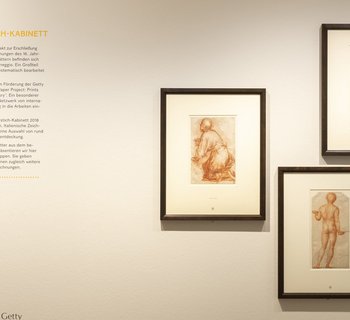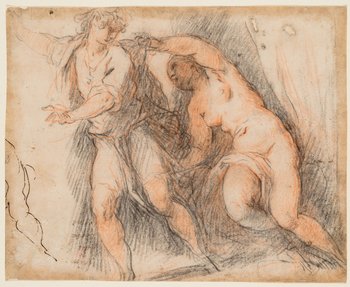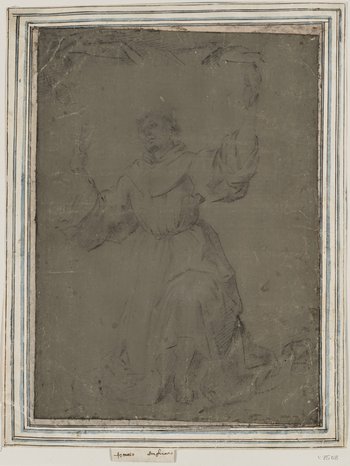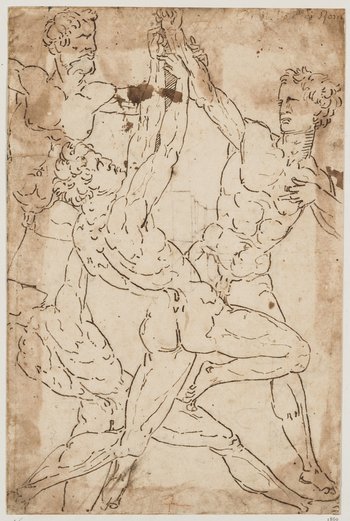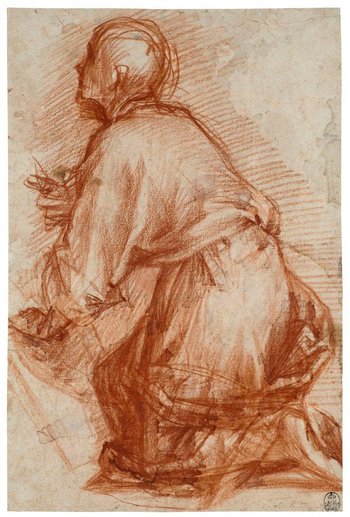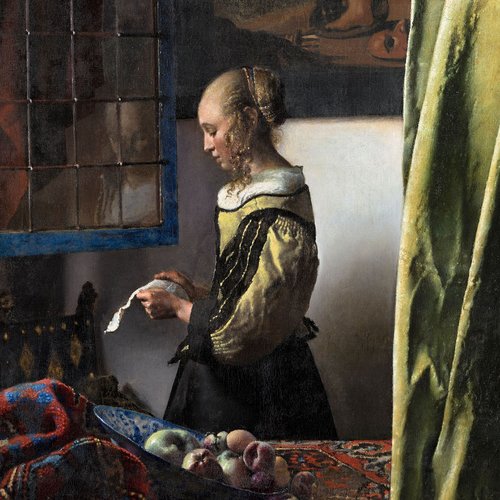A WIDER VIEW #5
Drawings for Prints?
August 24 - September 11, 2022
The last round revolves around Jacopo Negretti, called Palma il Giovane (Venice, ca. 1550–1628), the most prolific draftsman in 16th-century Venice. Initially attributed to other artists, the drawings presented here have recently been (re-)connected to Palma and they are more or less directly related to prints. Joseph and Potiphar’s Wife is quite close to a study Palma made for the etching Venus and Adonis by Giacomo Franco; Monks in a Landscape is the preparatory drawing for the first plate of Paolo Bozzi's devotional pamphlet Tebaide Sacra. The – most likely Dutch – etching is likely after Palma's Mars and Venus surprised by Vulcan. The last example shows how artists’ compositions could migrate across countries and media.
